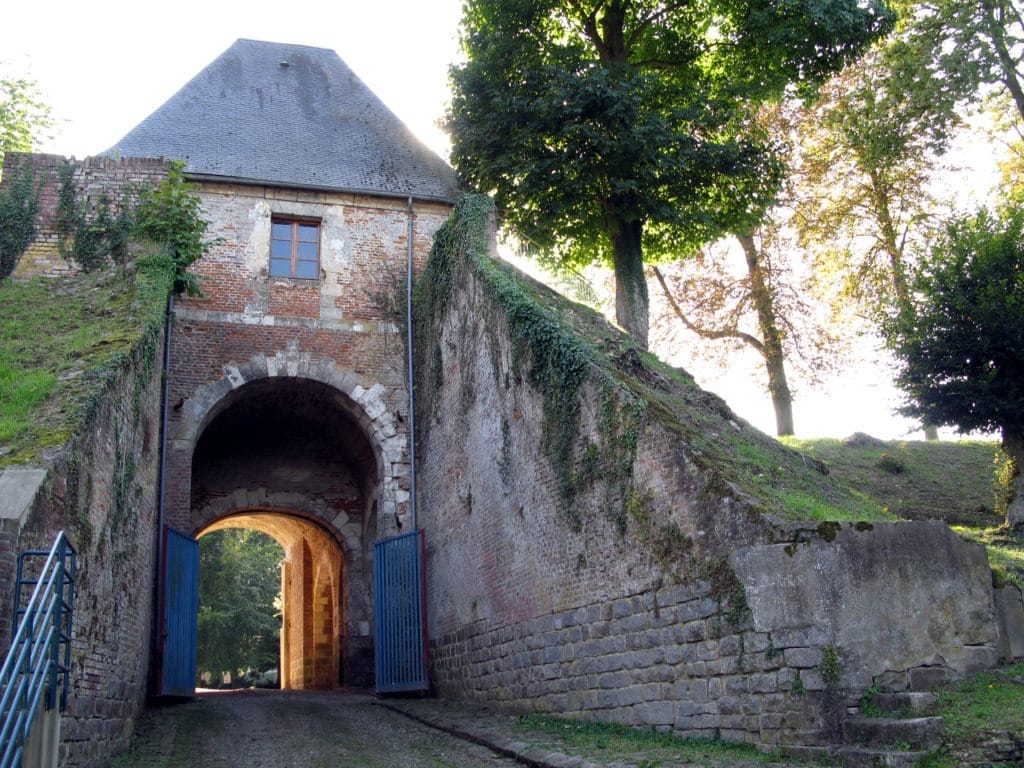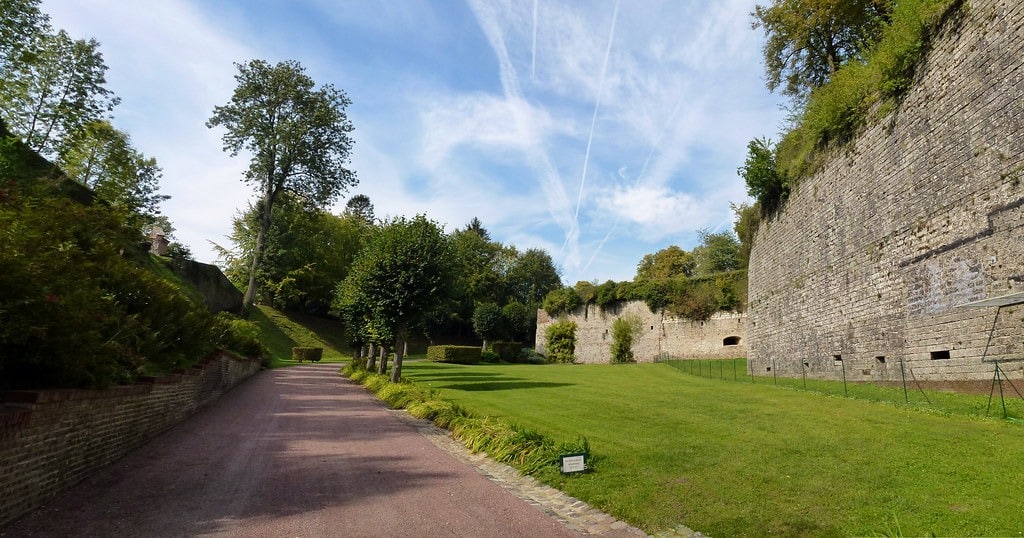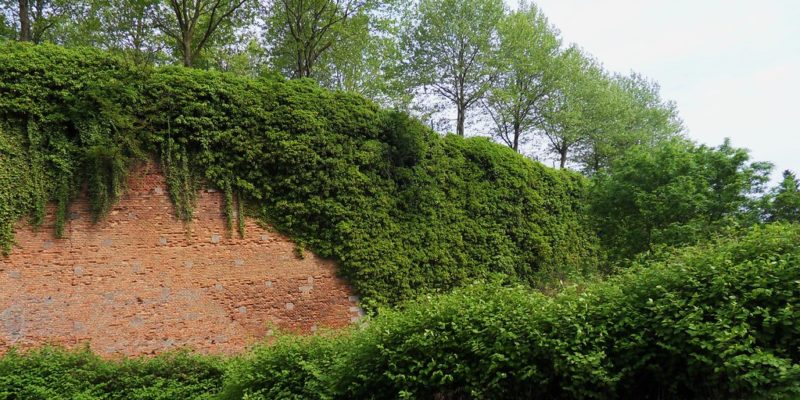The citadel of Doullens, a jewel of military architecture in northern France that is no match for Arras, is a site steeped in history, mystery and beauty. Erected in the 16th century, this remarkable fortress played a central role in France’s national defense, but it has also witnessed the transformations and dramas of modern French history.
Origin : A frontier fortress
The establishment of the citadel at Doullens must be seen in the context of a particular, dense and tormented political and geographical environment. The persistent conflict between the Kingdom of France and the powerful Dukes of Burgundy during the 15th and 16th centuries created an atmosphere of uncertainty and constant threat. In this context, the War of the Burgundian Succession, which took place at the end of the 15th century, played an important role. This war resulted in a major shift in the geopolitics of the region, with the loss of Picardy to the Burgundian Netherlands. The frontier moved north, to the border with Artois, which remained under Burgundian control. Doullens, once a peaceful town, found itself propelled to the front line of this new territorial chessboard. The need to fortify this frontier town became obvious. With existing medieval fortifications rendered obsolete by innovations in artillery, an adequate military response was imperative.
It was against this backdrop that King François I took the bold decision to build a sandstone citadel at Doullens,a project entrusted to Robert Mailly, a renowned military engineer of the time. Under his direction, the fortress was designed with four robust bastions with orillons and casemated flanks. This layout was typical of bastions built in France and neighboring Netherlands during the 1530s and 1540s. The construction of the citadel was not just an architectural and military feat; it symbolized France’s determination and strategy in protecting its borders (not unlike that of Lille). With the visit of François I in 1526, and then that of his son Henri II in 1547, to monitor the progress of the work, the importance of this fortress was underlined.
Situated at the confluence of the Grouche and Authie rivers, and occupying a strategic position between the Amiens coast and the Artois hills, the Doullens citadel quickly became a key element in France’s defensive system. Its location and design reveal the complexity and richness of military thinking at the time, and bear witness to the emerging art of modern warfare.

Doullens Citadel Gate
Conversion and extension
In the 15th century, the rapid evolution of artillery led to a revolution in siege warfare and the defense of fortifications. Cannons became increasingly powerful and precise, rendering traditional defenses obsolete. Faced with these changes, the citadel at Doullens had to adapt to remain an effective bastion of French defense. Under the reign of Henri IV, at the end of the 16th century, the need to renovate and expand the citadel was obvious. Henri IV commissioned Jean Errard, a military engineer from Bar-le-Duc, to carry out this important task. Errard was an expert in modernizing fortifications, and his designs reflected the changing needs of the battlefield. He added a second line of defense to the citadel, strengthening its ability to withstand enemy attacks. This extension included a series of additional ramparts, modified bastions and new ditches, creating a more complex and robust defense-in-depth system. These changes enabled the citadel to withstand prolonged sieges and absorb the impact of more powerful cannons. The great military engineer Sébastien Le Prestre de Vauban also influenced later improvements to the citadel, although he may never have visited Doullens himself.
Vauban’s principles, which revolutionized the construction of fortifications in the 17th century, found their way into the modernization of Doullens. His approach emphasized the design of star-shaped defenses with specific angles and orientations to maximize firepower and minimize blind spots. The innovations and modifications made to the citadel over time were not simply responses to technological advances in artillery. They testify to France’s growing understanding of military strategy and tactics, and its determination to maintain a position of strength in a contested region.
A changing role
The history of the citadel at Doullens goes far beyond its role as a military stronghold. With the signing of the Treaty of the Pyrenees in 1659, ending a series of conflicts between France and Spain, the border was redefined and the citadel lost its strategic importance. This change in the European political landscape led to a fundamentally different role for the citadel. Instead of serving as a defense against external attack, the citadel became a diversified place of detention. Its solid structure and secure facilities have made it ideal for a variety of imprisonment and detention purposes.
- State prison: The citadel was used to imprison individuals deemed dangerous or undesirable by the state.
Its thick walls and well-guarded cells have held political prisoners, high treason criminals and other notorious inmates ; - House of Preservation: Over the years, the citadel has also served as a place of rehabilitation and reform.
This included programs to reintegrate prisoners into society and help them rebuild their lives ; - World War II internment camp: During this tumultuous period, the citadel was used to intern individuals deemed suspicious or dangerous. This included prisoners of war, political dissidents and others who were under the control of the ruling regime;
- Temporary home for families of Harkis: After the Algerian war, the citadel was transformed into a home for families of Harkis, Algerians who had fought alongside the French. This dark episode in French history was marked by neglect and mistreatment of these families.
Recently, the French Parliament recognized these injustices and promised reparation.
The citadel of Doullens, in its various incarnations, is a microcosm of French and European history. Each change of role reflects a change in society, politics or the needs of the time. What was once a powerful fortress has become a symbol of the evolution of justice, war, rehabilitation and national memory. The citadel’s walls bear the echoes of centuries past, and its history continues to resonate in the present.

View of the Doullens Citadel
His role in the First World War
During the First World War, the citadel at Doullens found a new use, transformed into a military hospital to care for wounded soldiers. It specifically served as a care center for the Canadian forces, offering essential medical services to those wounded on the battlefield. The choice of the citadel as a hospital was a strategic one, offering additional security and a robust infrastructure for medical operations. The citadel’s history as a military hospital is another facet of its multifunctional role, demonstrating its ability to adapt to the changing needs of the times.
The tragedy of May 1918 and a lasting tribute
The citadel, despite its imposing structure, did not escape the violence of war, as did others such as Arras. In May 1918, a tragic German bombardment hit the hospital, costing the lives of many medical staff and patients. This devastating attack left an indelible scar on the memories of those who lived and heard about this dark episode. As a tribute to the lives lost, a Canadian maple tree has been planted on the site, symbolizing both the link with Canada and a living memorial to those who sacrificed their lives. Each leaf of this tree recalls the citadel’s heroes, and its shadow continues to tell the story of a time when war touched even the safest and most sacred of places.
The citadel today: A place of leisure and culture
Since the 1970s, the citadel has been awakened from its state of neglect thanks to the efforts of local associations and the support of the Somme département. Today, it is a recreational area where visitors can explore its historic walls, bastions and former prisons. The site also hosts a variety of cultural and sporting events, including the Journées doullennaises des jardins d’agrément, extreme races, mountain bike and motocross championships, and music festivals. History buffs can enjoy exhibitions, such as the one devoted to Albertine Sarrazin, the writer who escaped from these walls, and books dedicated to the citadel’s rich history.
Geographical location
Here’s a map to help you find the Citadelle de Doullens, just outside the town, in the direction of Amiens :
To conclude
The citadel at Doullens is more than just a historic monument. It is a living symbol of French history, a place for reflection and remembrance, and a vibrant space for culture and leisure. Whether you’re a history buff, an avid sports enthusiast or simply looking for a unique cultural experience, the citadelle of Doullens invites you to explore its rich past and take part in its dynamic present.
R.C.
